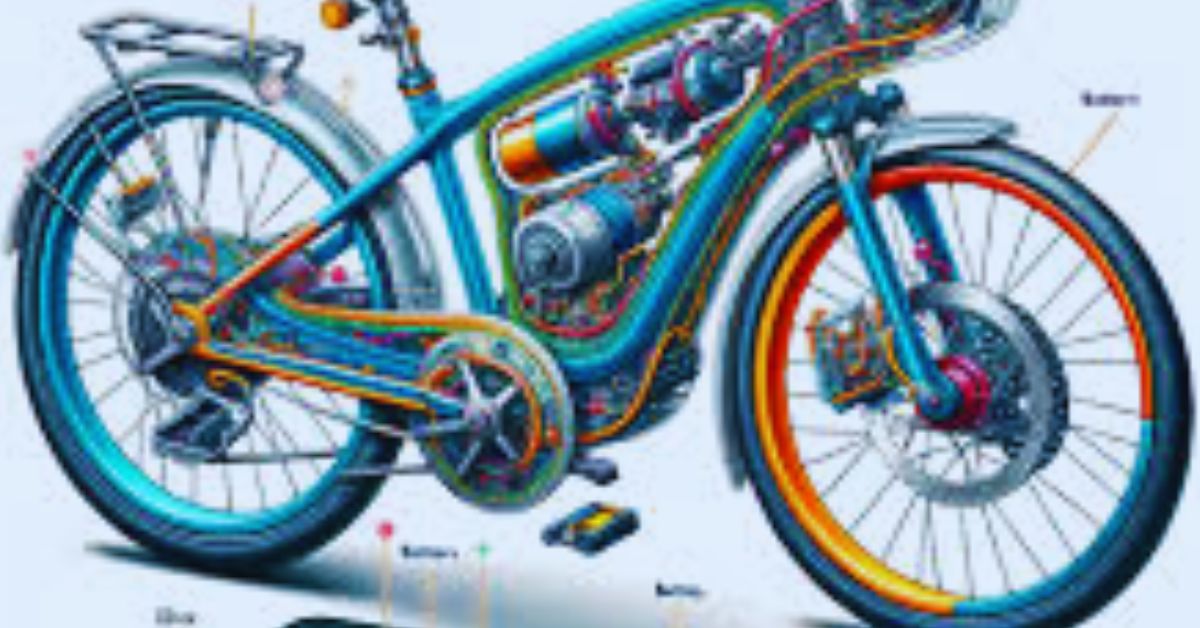The rise of e-bikes has been a game-changer in urban transportation, providing a sustainable, efficient, and enjoyable alternative to traditional modes of transport. In recent years, artificial intelligence (AI) has become a key factor in enhancing e-bike technology, transforming how these vehicles operate and improving the overall riding experience. AI’s integration in e-bike systems offers promising advancements in efficiency, performance, and user convenience. This article explores how AI contributes to optimizing e-bike efficiency and boosting performance, making it an essential component in the next generation of e-bikes.
Enhanced Battery Management
One of the critical aspects of e-bike performance is battery efficiency. Traditionally, managing battery usage was a challenge, as riders had to monitor battery levels manually to avoid running out of power unexpectedly. AI now plays a vital role in improving battery management systems, allowing for intelligent control over power distribution and usage. Through AI algorithms, e-bikes can predict power needs based on the rider’s habits, terrain, and riding speed, optimizing battery use in real-time.
AI-driven battery management systems can extend battery life by reducing unnecessary power consumption and balancing energy usage across various components. By learning from a rider’s behavior, these systems can predict when the battery may need recharging and even adjust power output to ensure riders reach their destination without a low battery warning. This level of control not only improves the user experience but also enhances the lifespan and reliability of the e-bike battery.
Smart Pedal Assist and Adaptive Power
AI has also transformed pedal-assist technology, a defining feature of e-bikes that determines the level of motor assistance a rider receives. Conventional pedal-assist systems are often based on simple torque sensors, which may not provide the most efficient or enjoyable experience. With AI-powered adaptive pedal assist, e-bikes can now analyze real-time data on a rider’s pedaling force, speed, and terrain, adjusting the motor assistance accordingly.
For example, AI can detect when a rider is climbing a steep hill and automatically increase motor support. On flat terrain, it can reduce assistance to conserve battery power. Adaptive pedal assist creates a smoother, more responsive riding experience by providing precisely the right amount of support based on current conditions. This approach not only improves performance but also enhances energy efficiency by minimizing wasted power, ensuring riders get the most out of each battery charge.
Predictive Maintenance and Diagnostics
E-bikes, like any vehicle, require regular maintenance to ensure optimal performance. AI can help prevent costly repairs and unexpected breakdowns by enabling predictive maintenance systems. Using sensors and machine learning, AI-powered systems can monitor the health of critical components, such as the battery, motor, and brakes, detecting signs of wear and tear before they become serious issues.
These predictive maintenance systems analyze data from each ride, identifying patterns that may indicate potential problems. When AI detects that a component needs attention, it can alert the rider or the manufacturer, making it easier to schedule repairs before issues escalate. This proactive approach reduces the likelihood of breakdowns, increases the lifespan of the e-bike, and gives riders peace of mind knowing that their e-bike is in good working condition.
Route Optimization and Navigation Assistance
E-bike navigation can be tricky, especially in urban areas where traffic, road conditions, and weather vary greatly. AI-powered route optimization tools can analyze real-time data on these factors, suggesting the safest and most efficient routes for riders. Unlike traditional GPS navigation, which may not account for specific cycling needs, AI-enhanced systems consider factors like elevation, bike lanes, and traffic levels, making navigation safer and more convenient.
Some advanced e-bike systems even adjust motor assistance based on upcoming terrain changes, such as steep hills or sharp turns. By integrating with smartphone apps or onboard displays, AI can offer turn-by-turn directions, notifications about nearby charging stations, or warnings about potential hazards along the route. This feature is particularly useful for commuters and city riders, helping them avoid busy intersections or road conditions that could slow them down.
Personalized Riding Experience
AI’s ability to learn from individual rider preferences and behaviors makes it possible to create a more personalized riding experience. By analyzing data on a rider’s typical routes, riding speed, and terrain preferences, AI can customize the e-bike’s settings to better suit the user’s needs. For instance, if a rider prefers a sportier, more challenging ride, the AI system can reduce pedal assistance, encouraging more physical effort.
This personalized approach also extends to safety features. AI can adjust braking response, motor assistance, and even recommend optimal riding speeds based on real-time conditions and a rider’s skill level. The more a rider uses the e-bike, the more accurately the AI system can predict their preferences, creating a tailored experience that enhances comfort and enjoyment.
Improved Safety and Accident Prevention
Safety is a major consideration for e-bike users, especially in busy urban areas. AI can significantly improve safety through features such as collision detection, real-time obstacle avoidance, and emergency braking. Equipped with sensors and cameras, AI-powered e-bikes can identify obstacles, vehicles, or pedestrians in the bike’s path, alerting the rider and even taking corrective actions if necessary.
Some e-bike models are equipped with AI-powered “smart helmets” that work in tandem with the e-bike’s safety systems, providing riders with audio-visual alerts to improve awareness. Additionally, AI-driven braking systems can monitor braking force and adjust for smooth deceleration, reducing the risk of skidding or sudden stops. These advancements make e-bikes safer for riders by minimizing the risk of accidents and enhancing control in complex environments.
Environmental Impact and Sustainability
AI contributes to the environmental benefits of e-bikes by enhancing their energy efficiency and reducing waste. By optimizing battery usage, managing power distribution, and extending the lifespan of components through predictive maintenance, AI helps reduce the e-bike’s overall carbon footprint. E-bikes already serve as a green transportation option, and AI-driven improvements further align with sustainability goals by reducing battery waste and energy consumption.
For instance, some AI systems monitor and regulate energy usage to prevent excessive battery drain, making it possible to cover longer distances on a single charge. This eco-friendly approach supports both individual sustainability efforts and broader urban initiatives aimed at reducing pollution and promoting clean, efficient transportation solutions.
Conclusion
The integration of AI into e-bike technology has brought about significant improvements in efficiency, performance, and safety, making e-bikes a more viable and appealing transportation option. From adaptive power management to predictive maintenance and personalized experiences, AI has reshaped what e-bikes can do, offering riders greater control, convenience, and peace of mind. As AI technology continues to advance, we can expect even more innovative features that further enhance the e-bike experience.


